From Patek Philippe to Hermès: 7 New Chronographs to Clock Your Summer Adventures

A chronograph, according to the standard definition, is a watch with a stopwatch function that counts short intervals, using an independent seconds hand separate from the running seconds. It also counts chronograph minutes in a subdial totalizer, and often another that totals small seconds. The standard dial architecture thus includes a central chronograph seconds and two subdials, and often a third that totals chronograph hours. But not all chronographs are the same. Within this definition are some intriguing variations, some subtle—detectable only by picky connoisseurs—and others more obvious. Here are seven new chronographs that clock or display laps in slightly different ways.
Patek Philippe Ref. 5905-R-010 Flyback Chronograph Annual Calendar
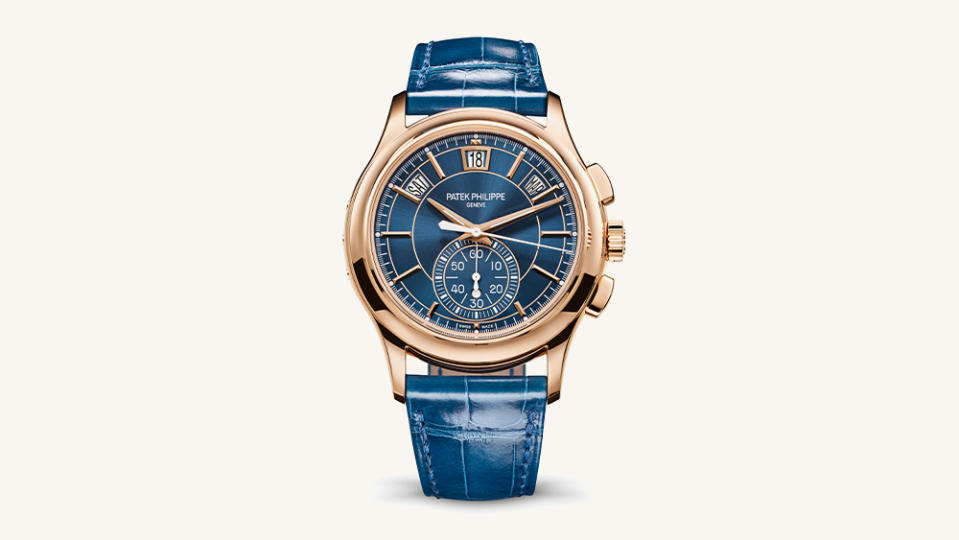
Patek Philippe’s signature complication is the perpetual calendar combined with a chronograph, but the annual calendar, which it brought to the market in 1996, is gaining traction. It is paired with a flyback chronograph on this new model with a red gold execution and blue sunburst dial with matching strap. It’s a dressier version of the 2021 5905, released in steel. Patek keeps it simple, with a 60-minute counter at 6 o’clock and no small seconds. Calendar functions appear in traditional windows along the top. It is priced at $75,108.
More from Robb Report
A $1.3 Million Philippe Dufour Simplicity Is Up for Sale at A Collected Man
Ryan Gosling Sported a Hot-Pink TAG Heuer Carrera to the 'Barbie' Press Day in Toronto
6 Stylish Watches to Rock All Summer, From Blancpain to Panerai
Jaeger-LeCoultre Reverso Tribute Chronograph
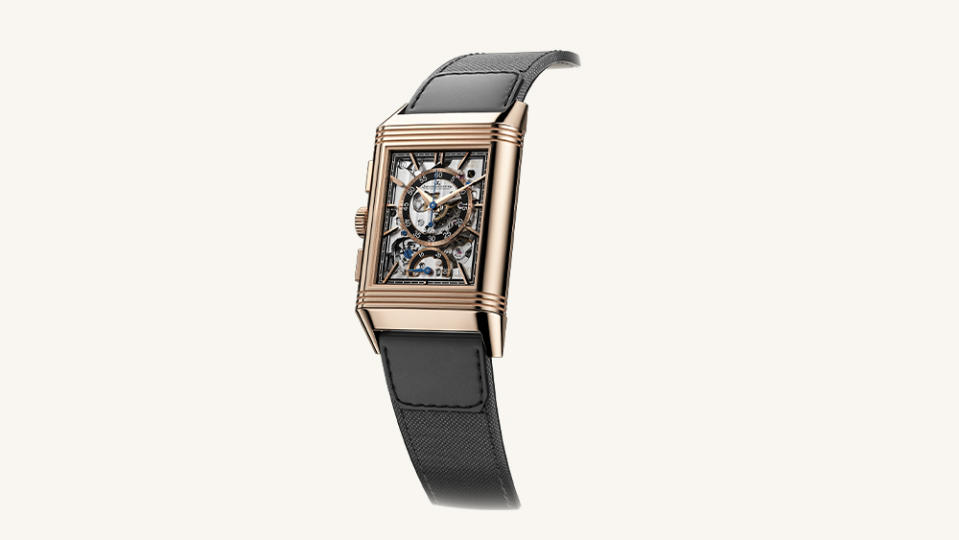
A chronograph movement is already challenging enough to engineer, but this one was structured to fit a rectangular case —a feat that, among other things, required using extra-long levers, stretching them out the length of the movement in order to keep them slim. But the main party trick of the manual-wound JLC 860 is that it powers two sets of hands that move simultaneously in opposite directions to indicate the time on both front and back watch dials, a breakthrough for the Reverso. The standard time-only recto side of the dial flips over to reveal the action on the verso (chrono) side, which has rare retrograde chronograph minutes. $21,400 in steel and $37,400 in gold.
A. Lange & Söhne Odysseus Chronograph
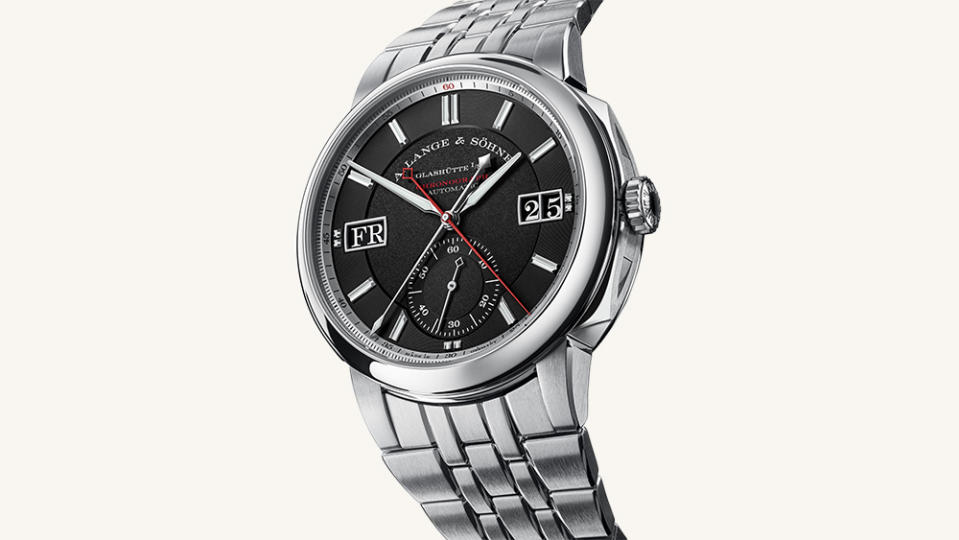
Lange, always with an eye to pure functionality, eschews the traditional two-register subdial setup here in favor of presenting, instead, the large day and date windows that are part of its DNA. Instead of placing the running chrono minutes in a subdial, they are clocked by a central hand pointing at an index on the flange, an extremely rare positioning in watchmaking. The result is a cleaner, more brand-specific design, and a new way of differentiating the complication. It is Lange’s first self-winding chronograph movement, limited to 100 pieces, priced in euros at €135,000 (approximately $147,300 at current exchange).
Parmigiani Fleurier Tonda Split Seconds Chronograph
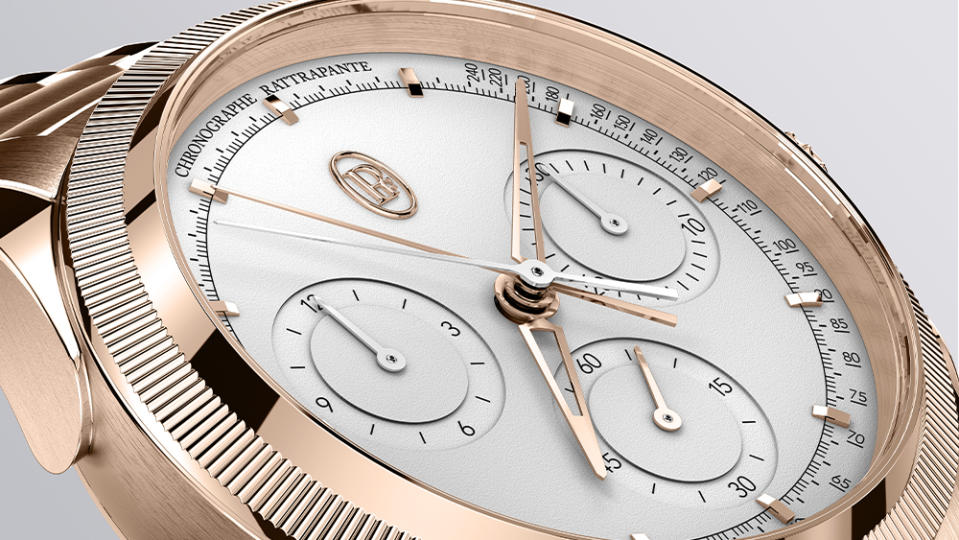
This is a new, 18-karat rose-gold version of the platinum special edition created to mark the brand’s 20th anniversary in 2021. Not only is the case and bracelet made of 18-karat rose gold, but so is the movement, (baseplate and bridges) with a barrel featuring the signature of Michel Parmigiani. The manual-wind caliber PF361 is a fully integrated rattrapante chronograph beating at a rate of 5 Hz or 36,000 vph for tenth-of-a-second precision, an uncommon accomplishment in watchmaking. It is priced at $169,100.
Montblanc Unveiled Timekeeper Minerva
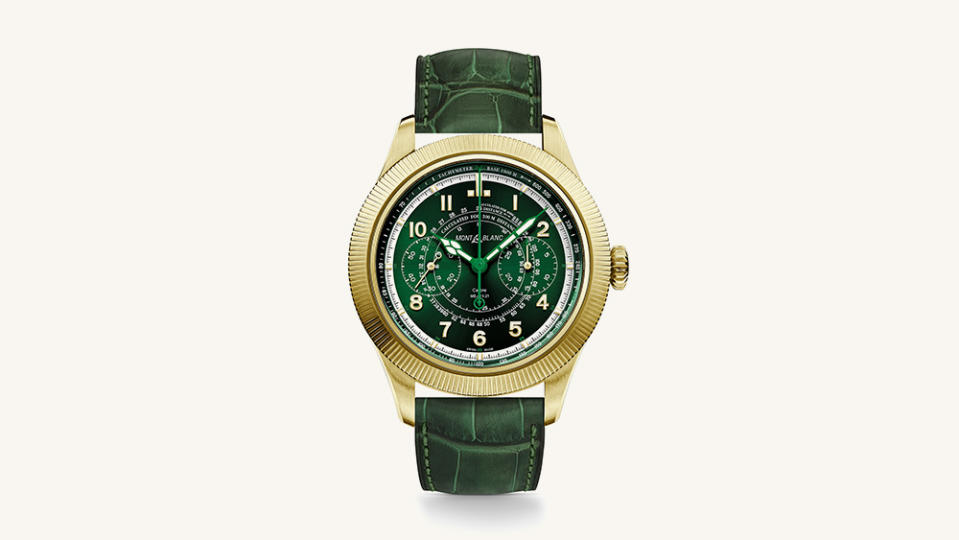
Montblanc is continuously finding ways to honor the considerable watchmaking oeuvre of its Minerva workshop in Villeret. The latest is this bezel-driven chronograph that is inspired by a Minerva caliber made in 1923. Instead of being driven by pushers on the side of the case, one click of the watch’s 18k gold bezel will start the chronograph, a second click will stop it, and a third will reset it. Montblanc is one of the few watchmakers to develop such a system and has filed several patents. There are two limited editions: 10 in steel with a white gold bezel at $36,500; 28 in lime gold at $50,000.
Grand Seiko Tentagraph

This is Grand Seiko’s first mechanical chronograph, and it leaps out of the gate with a fast movement. The caliber 9SA5 is a high-frequency movement, running at 36,000 vph, with a 72-hour (3-day) power reserve thanks to two barrels, impressive for a chronograph. Grand Seiko says it’s accurate to within +5 to -3 seconds per day. Elements of the titanium case and bracelet are finished with the brand’s proprietary high polish, called zaratsu, giving it an unmistakable mirror-like shine. Chronograph seconds and minute hands are curved slightly downward for more accurate readings of the indexes. Priced at $13,700, it is unlimited.
Hermès H08 Chronograph

Although this is a chronograph with a standard dial design, including chronograph minutes totalizer at 9 o’clock and running seconds at 3 o’clock, it has an extra long central chronograph seconds hand, stretching the width of the dial, adding a bit of drama. The orange index and subdial hands are also stand-outs, along with the squared subdials, giving it a sportier look than other, more conservative chronographs. It contains the H1837 movement with a chronograph module and is priced at $14,600.
Best of Robb Report
Sign up for Robb Report's Newsletter. For the latest news, follow us on Facebook, Twitter, and Instagram.

